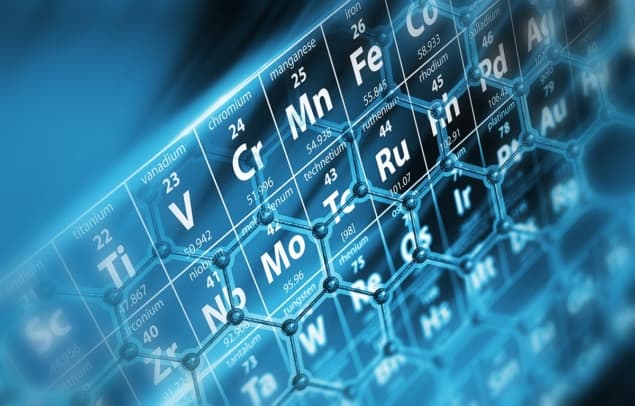
Two comprehensive catalogues of potential topological materials have been published by independent teams of physicists. The catalogues contain thousands of crystalline materials and suggest that topological materials are much more common than previously thought. Knowing the topological properties of such a wide range of materials could be a boon to researchers trying to develop technologically useful devices.
The study of topological materials is a hot topic in condensed-matter physics, but the field is still relatively young – with the first papers appearing in the mid-2000s. Since then, physicists have identified several hundred materials with topological properties.
Many of these are topological insulators, which are electrical insulators in the bulk but very good conductors on the surface. This occurs because electrons on the surfaces of these materials are unable to backscatter from an impurity or defect without reversing the direction of their spins – which is a result of the topology of their electronic surface states.
Topological states are robust to perturbations arising from impurities, defects or noise and therefore topological materials could prove very useful in creating low-energy electronic devices and even quantum computers.
Symmetry indicators
A few weeks ago, Physics World reported on an arXiv preprint that described a comprehensive search for topological materials using “symmetry indicators”. This work was done by Ashvin Vishwanath at Harvard University in the US, Xiangang Wan at China’s University of Nanjing and colleagues. Using a technique developed in 2017 by Vishwanath and others, the team calculated specific properties of candidate crystalline materials at high symmetry points in the materials’ electronic band structures. This allowed the team to decide whether a material has topological properties without having to do overly complicated and computationally-intensive calculations. They were able to identify nearly 400 materials that could be topological insulators and nearly 700 potential topological semimetals.
A similar method of “symmetry indicators” has also been developed by an international team that includes Princeton University’s Andrei Bernevig. In 2017, Bernevig and colleagues unveiled an approach called “topological quantum chemistry”, which they have now used to calculate the relevant symmetries of nearly 27,000 materials. As a result, team has identified more than 3000 topological insulators and more than 4000 topological semimetals. To make it easy for other researchers to access their results, the team has created a searchable online catalogue.
The result was astonishing: more than a quarter of all materials exhibit some sort of topology
Andrei Bernevig
“Once the analysis was done and all the errors corrected, the result was astonishing: more than a quarter of all materials exhibit some sort of topology,” says Bernevig. “Topology is ubiquitous in materials, not esoteric,” he adds.
Meanwhile, at the Institute of Physics (IOP) of the Chinese Academy of Sciences in Beijing a team including, Zhong Fang, Chen Fang and Hongming Weng used a similar approach to calculate the potential topological properties of about 39,000 known crystalline materials. The IOP team identified more than 8000 topological materials and have also made their results available in a searchable online catalogue.
Not all are ideal
Chen Fang also says he was “very surprised” by the large number of topological materials that have been identified. However, he cautions that many of these materials are not “ideal” – and the topological properties of some may be smeared-out by more non-topological properties.
Nevertheless, Fang expects the catalogue to be very useful for both fundamental research and the development of practical topological devices. For example, someone trying to create quantum-computing devices based on topological superconductors could use the catalogue to find materials that can have both topological and superconducting properties.
Bernevig – who says that his team’s results are in strong agreement with the IOP group – adds, “When fully completed, [our] catalogue will usher in a new era of topological material design.” He adds, “This is the beginning of a new type of periodic table where compounds and elements are indexed by their topological properties rather than by more traditional means.”
Marcel Franz, a theorist specializing in topological states of matter at the University of British Columbia, told Physics World, “I was not really surprised by the number of newly identified topological materials”. He added, “That topology would be ubiquitous in nature was already suggested by the large number of (3D) topological insulators discovered within a couple of years of the original theoretical prediction”.
“What surprised me was that the exhaustive database search did not really discover any obvious ‘hidden gems’. For instance it seems that bismuth selenide (one of the first topological insulators originally discovered) will remain the best topological insulator in terms of its bulk gap size and other indicators.”
All three research groups have published their results in separate papers in Nature, which can be accessed here: Vishwanath; Bernevig; Fang.
- Hamish Johnston talks about the topological catalogues in the Physics World Weekly podcast.



